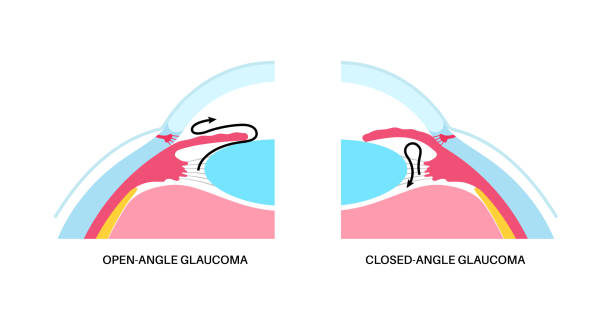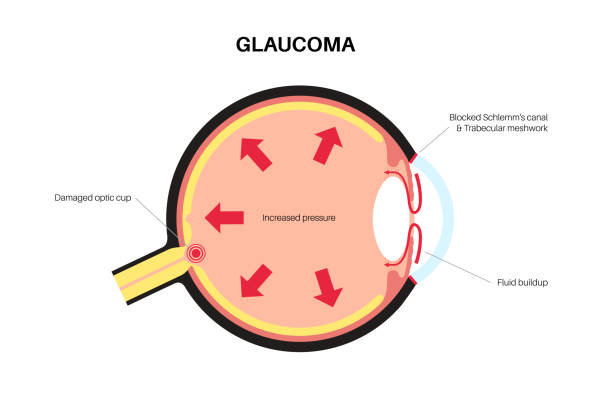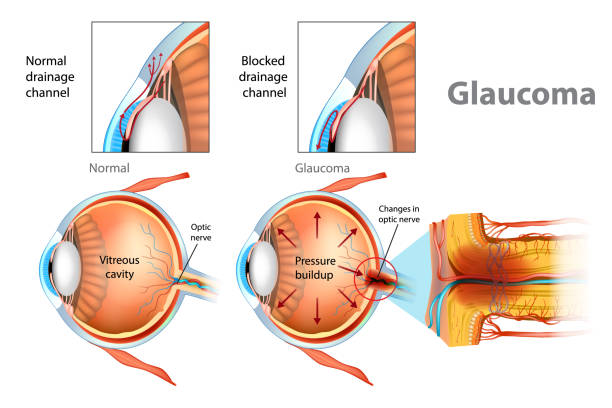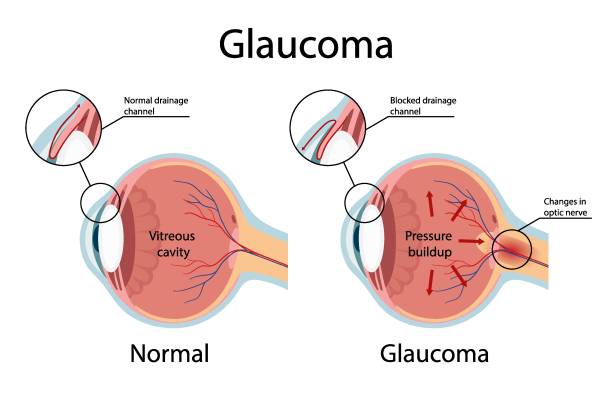When it comes to protecting your eyesight, few conditions are as serious as glaucoma. Often called the “silent thief of sight,” glaucoma develops slowly and may not cause pain or obvious symptoms in its early stages. Because it usually affects peripheral vision first, many people don’t realize they are losing sight until the disease has already advanced. By the time noticeable vision loss occurs, the damage to the optic nerve is often permanent and cannot be reversed.
The good news? Glaucoma doesn’t have to mean blindness. With regular checkups, early detection, and the right treatment plan, you can protect your vision and greatly reduce your risk of serious damage. Eye doctors have effective tools to detect glaucoma before you notice changes, which is why routine exams are so important. In this guide, you’ll learn everything you need to know about glaucoma—what it is, why it happens, the warning signs to watch for, and practical steps you can take to protect your eyes for years to come.
What Is Glaucoma?
Glaucoma is an eye disease that damages the optic nerve, the vital part of your eye that carries visual signals to your brain so you can see clearly. This damage usually happens when fluid inside the eye does not drain properly, causing a buildup of pressure known as intraocular pressure (IOP). Over time, this extra pressure puts stress on the optic nerve, slowly wearing it down.
If left untreated, glaucoma can cause blind spots in your vision, often starting at the edges of your sight. As the disease progresses, these blind spots grow larger and can eventually lead to total vision loss. Because the damage is permanent, once vision is lost, it cannot be restored. This is why glaucoma is so dangerous. In fact, it is one of the leading causes of irreversible blindness worldwide, according to the World Health Organization. Early detection and treatment are the keys to protecting your eyesight.

Types of Glaucoma
Not all glaucoma is the same. Understanding the main types can help you know your risks.
Open-Angle Glaucoma
Open-angle glaucoma is the most common form of glaucoma, making up nearly 90% of all cases. It happens when the drainage canals in the eye become slowly clogged over time. Even though the angle where the iris and cornea meet remains open, fluid cannot drain properly. This leads to a gradual rise in intraocular pressure (IOP), which can damage the optic nerve.
The tricky part is that open-angle glaucoma develops very slowly and usually has no obvious symptoms in the early stages. Most people do not feel pain or notice vision changes until significant damage has already occurred. By the time vision loss is detected, it is often permanent.
Because of its silent nature, regular eye exams are the best way to catch open-angle glaucoma early. Early treatment with eye drops, laser therapy, or other methods can control eye pressure and help prevent further vision loss.
Angle-Closure Glaucoma
Angle-closure glaucoma is less common but more dangerous than open-angle glaucoma. It occurs when the drainage angle in the eye suddenly becomes blocked, stopping fluid from leaving the eye. This causes a quick and severe rise in intraocular pressure (IOP) that can damage the optic nerve very quickly.
Unlike open-angle glaucoma, which develops slowly, angle-closure glaucoma often appears suddenly. Symptoms may include severe eye pain, blurred vision, halos around lights, headache, nausea, and even vomiting. Because the attack happens fast, it can cause permanent vision loss within hours or days if not treated right away.
This type of glaucoma is considered a true medical emergency. Anyone experiencing these symptoms should go to an eye doctor or emergency room immediately. Quick treatment, often with medication or laser surgery, can relieve the pressure and save your sight.
Normal-Tension Glaucoma
Normal-tension glaucoma is a unique type of glaucoma where optic nerve damage occurs even though eye pressure remains within the normal range. Unlike open-angle or angle-closure glaucoma, the buildup of intraocular pressure is not the main factor. Instead, doctors believe that poor blood flow to the optic nerve may play a major role.
This condition is harder to detect because eye pressure tests may appear normal during a routine exam. People with normal-tension glaucoma often experience a slow loss of peripheral vision, similar to other forms of glaucoma. Risk factors may include a family history of the disease, low blood pressure, or vascular problems that reduce circulation to the eye.
Even though eye pressure is not elevated, treatment usually focuses on lowering IOP further with eye drops or laser therapy, since reducing pressure can still help protect the optic nerve. Regular monitoring and early detection are key to preventing vision loss from this form of glaucoma.
Congenital Glaucoma
Congenital glaucoma is a rare type of glaucoma that appears in babies and young children. It is usually caused by problems in the eye’s drainage system that are present at birth. When fluid cannot drain properly, pressure inside the eye builds up and begins to damage the optic nerve.
Signs of congenital glaucoma often include cloudy eyes, enlarged eyes, sensitivity to light, and excessive tearing. Parents may also notice that their child frequently rubs their eyes or seems uncomfortable in bright light. Because young children cannot always describe their symptoms, it is important for parents and doctors to recognize these early warning signs.
This type of glaucoma often requires surgery as the main treatment, since medications alone are usually not enough to control the eye pressure. With early diagnosis and proper care, many children with congenital glaucoma can still maintain useful vision. However, lifelong monitoring is often needed to protect their eye health.

Who Is at Risk for Glaucoma?
While anyone can develop glaucoma, some people have a higher risk. You may be more at risk if you:
- Are over the age of 60
- Have a family history of glaucoma
- Are African American, Asian, or Hispanic
- Have diabetes, high blood pressure, or heart disease
- Use long-term steroid medications
- Have had previous eye injuries
👉 The American Academy of Ophthalmology recommends regular eye exams for people at risk, starting as early as age 40.
Early Warning Signs of Glaucoma
Glaucoma often develops silently, but paying attention to changes in your vision can help catch it early. Possible signs include:
- Blurred or hazy vision
- Loss of peripheral (side) vision
- Halos around lights
- Eye pain or pressure
- Frequent headaches
- Redness in the eye
- Sudden vision loss (in acute cases)
If you notice any of these symptoms, contact an eye doctor immediately.
How Is Glaucoma Diagnosed?
The only way to diagnose glaucoma is through a comprehensive eye exam. Your doctor may perform several tests, such as:
- Tonometry – Measures eye pressure.
- Ophthalmoscopy – Examines the optic nerve for damage.
- Perimetry – Tests for blind spots in your vision.
- Gonioscopy – Checks the drainage angle inside your eye.
- Pachymetry – Measures the thickness of your cornea.
Regular eye exams are crucial because many people with glaucoma don’t notice symptoms until the disease has progressed.
Glaucoma Treatment Options
Glaucoma has no cure, but treatment can slow or stop vision loss if started early. Your doctor may recommend:
Medications
Prescription eye drops are often the first line of treatment. They lower eye pressure by reducing fluid production or improving drainage.
Laser Therapy
Laser treatments can help open the eye’s drainage channels and reduce pressure.
Surgery
In advanced cases, surgery may be needed to create a new drainage pathway for fluid to leave the eye.
👉 Learn more about treatment options from the National Eye Institute.
Lifestyle Tips to Protect Your Vision
While medical treatment is essential, healthy habits can support your eye health and lower your risk of vision loss.
- Eat an eye-healthy diet – Include foods rich in vitamin C, vitamin E, zinc, and omega-3 fatty acids.
- Stay active – Regular exercise improves blood flow to the eyes and reduces pressure.
- Protect your eyes – Wear sunglasses to block UV rays and safety glasses when needed.
- Avoid smoking – Smoking increases the risk of optic nerve damage.
- Manage other conditions – Keep diabetes and high blood pressure under control.

How to Prevent Glaucoma
You can’t always prevent glaucoma, but you can reduce your risks by:
- Scheduling regular eye exams (every 1–2 years after age 40, or sooner if you’re high-risk)
- Following your doctor’s treatment plan if you’ve been diagnosed
- Staying consistent with prescribed eye drops
- Talking to your family about your risk since glaucoma can run in families
Prevention starts with awareness and proactive care.
When to See an Eye Doctor
You should see an eye doctor right away if you:
- Notice sudden vision changes
- Experience eye pain, redness, or pressure
- See halos around lights or have blurry vision
- Have a family history of glaucoma
Early treatment can make the difference between healthy vision and permanent blindness.
Final Thoughts: Protecting Your Eyes from Glaucoma
Glaucoma may be one of the leading causes of blindness, but it doesn’t have to steal your sight. By learning the risk factors, paying attention to early signs, and scheduling regular eye exams, you can protect your vision for the future.
👁️ Don’t wait until it’s too late—make your eye health a priority today. Book a comprehensive eye exam, follow your doctor’s advice, and share what you’ve learned with family and friends. Together, we can fight the silent thief of sight.
👉 Have you or someone you know been affected by glaucoma? Share your story in the comments below—your experience could inspire someone else to protect their vision.

